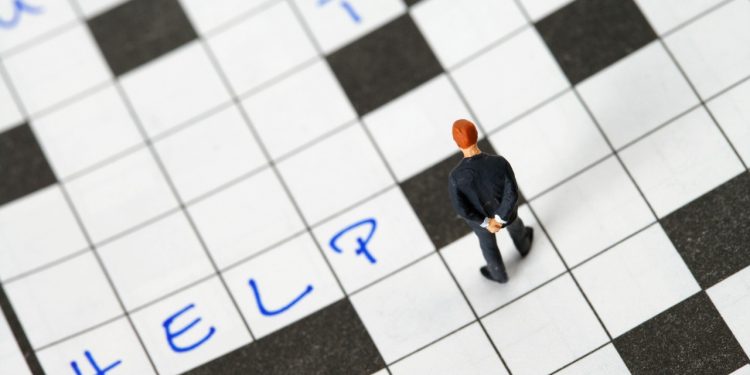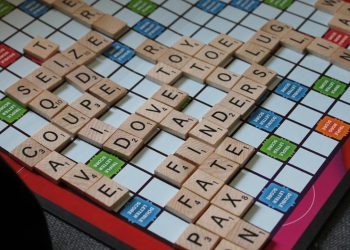Professional players, experienced with 5-letter puzzles, often claim to complete the challenges in three guesses. If you’re on the seventh guess without a clue, don’t worry; your answers are structured logically.
These games can sometimes feel like they offer limitless possibilities, but advanced players combine strategic guessing with linguistic knowledge. Whether or not you believe in magic, when paired with the appropriate techniques you will gain newfound problem-solving skills.
In the end, I’ll share actionable tips that will get you ready to unlock professional status and breeze through these challenges.
Step 1: Use an Opening Word that Maximizes Information
Simply put, your first guess will set the initial puzzle pathway. Pros emphasize the smarter opening word selection due to its impact on the result. As noted, opening the guessing phase with optimal informative words guarantees achieving goal outcomes.
Here’s what makes a perfect opening word:
- Diverse Letters: Think of every word that begins with a different alphabet and contains five letters. In this case, opting for words with repeating letters is unwise as it will work to your disadvantage.
- Common Letters: A, E, R, S, and T are the most common letters used in words and are highly likely to form part of the word you are guessing.
- Balanced Vowels and Consonants: Guessing several types of vowels and consonants aids in determining the type of letters at the start of the process.
Examples of excellent starting words:
“Rates”
“Slate”
“Crane”
These words all consider letters used often, increasing the chance Rate and the ease with which these words can be manipulated lets you succeed in your follow up attempts.
Step 2: Analyze the Feedback
Step one is only one guess and as with all the first attempts, it usually is not successful and the game in every attempt gives additional feedback aside from just stating good or bad. In most situations this information is Underused. This is why competitive players utilize the feedback the best way possible. This is done in the following ways:
- Green Letters (Correct and in the Right Spot): Words you have used and placed correctly add up and help unlock the letters you mark as finished positively.
- Yellow Letters (Correct but in the Wrong Spot): Altering the spot few letters placed assists in guessing correctly other letters which help win the game by marking the letters in the correct spots test them guide them mark them chang willingly accept into your guesses every time placing them in spots different from what they were put before.
- Gray Letters (Not in the Word): Words in letters should the for these it is important correct guess order.
- Helpful hint: Feedback can be organized more creatively, like making mental grids to eliminate revealed letters and positions. Maintaining organization makes achieving success much easier.
Step 3: Reduce the Choices
This is where creative thinking is joined by reasoning. After making your first guess, your focus should be on attempting to limit the number of words that could possibly fit to as few as possible. Here’s how to go about that:
- Look For Patterns: From the feedback, try to determine what patterns the word must follow. If it is given that the second letter is “A” and the fourth letter is “T,” then try to think of all possible words that can be made with this structure.
- Give Special Attention To Letter Frequency: Some letters have a greater chance of appearing in certain positions. For instance, “E” is quite common towards the end of 5 letter words.
- Do Not Use Eliminated Letters As A Guessing Aid: While it may be easy to think that they can guess randomly, relying on the feedback received will be much more effective.
By your second guess, you should attempt to place most if not all of the yellow letters into new positions. Fresh letters should also be balanced to help refine the guess. Depending on the initial feedback, “turn” and “chip” could become excellent second guesses.
Step 4: Employ Word Families
Does it happen to you that some words come together as if they are one? That’s because they are parts of the same family or follow similar rules. Professionals make use of this.
For instance:
- When you get “S” and “T” in a word, think of the “ST” cluster or “TS” at the beginning or the end.
- If you have a vowel “O,” think about the words “OO” or “OA” that are regularly used with “O” in the middle.
- Using these patterns helps eliminate guesswork and will have you determining your word in no time.
Step 5: Stay Calm Under Pressure
The last, and maybe the most important piece is mindset. It is simple to crack conflicting under pressure when you have only one guess left. But the truth is that remaining still makes you more efficient.
- Look At Your Clues Again – Your previous draw was nice, but evaluate the clues once more and check what you might have missed.
- Choose Two Combinations Test: Go with the combination that feels better. This most likely should be one which is backed by most of your evaluation steps.
- Trust Your Choice: Often, experience results in guided intuition. Don’t overanalyze yourself, yes you can accomplish a lot!
Additional Suggestions from the Experts
- Work on Faster Recognition: Use your free time to solve anagrams and play other word based games to improve your rapid recognition of patterns.
- Learn New Words: Knowing more words is ideal, especially if you want to expand your language toolkit. Regular stimulation through reading, playing, and learning new words is essential.
- Use Tools with Caution: Purists may disregard this suggestion, but word generators can serve as helpful practice mode tools for suggesting potential words and honing skills.
Why Solving Puzzles is Both an Artform and a Science
In essence, 5 letter word puzzles rest on the intersection of the language sphere and elimination logic. Every guess teaches you something (in some cases, it’s only teaching you what not to do next time). That is the reason everyone loves solving puzzles it tests your brain and your instincts.
When you see pros solve the puzzle in under three guesses, remember the tradespeople didn’t get there overnight. They worked hard, displayed patience, and were willing to learn from every game. The best thing? These tips can be applied immediately for an improved skill set.
Prepared to put your skills to the challenge?
It’s time to put them to good use, now that you have pro-level strategies. Puzzle Jam provides an exhilarating assortment of 5-letter word challenges that will not only test your skills but also keep you captivated for days.
Why delay? Get ready to have fun while unlocking the full potential of your mind. Test yourself with Puzzle Jam today, and find out how many puzzles you can solve in less than three guesses!














